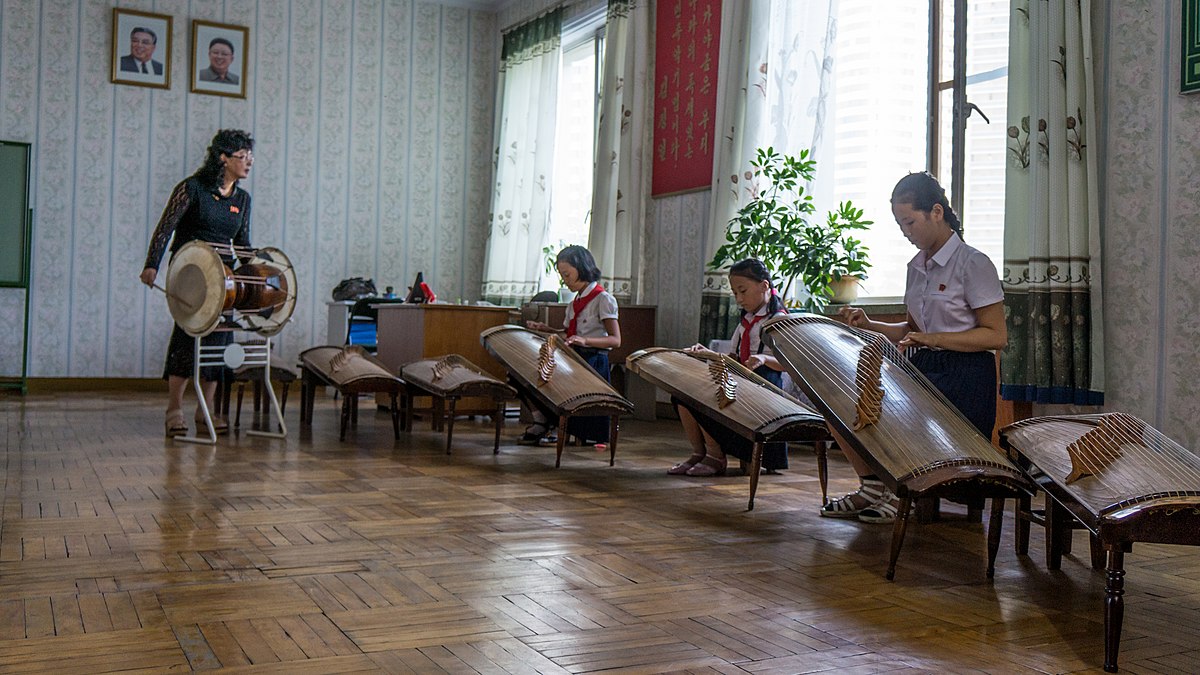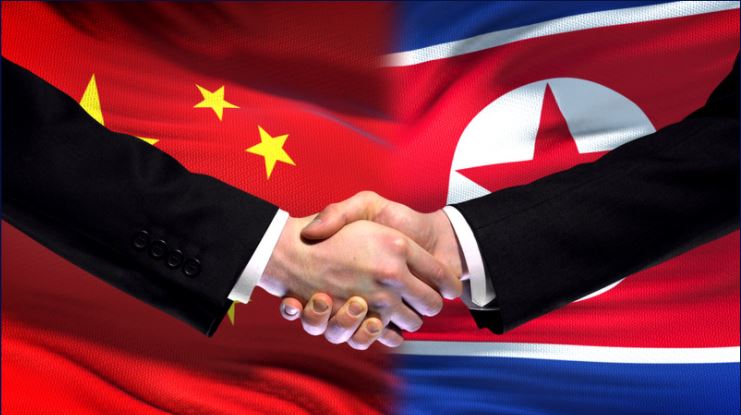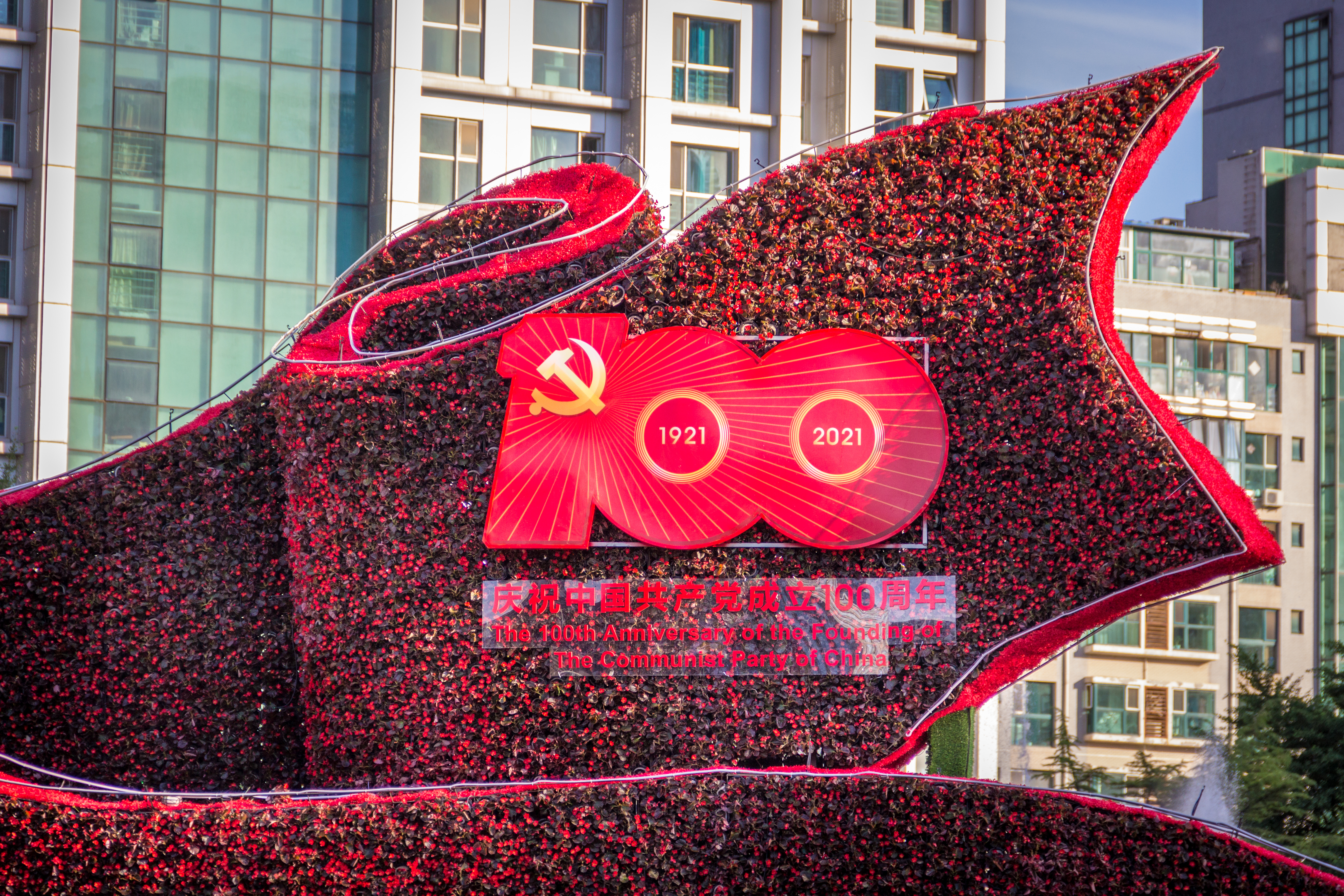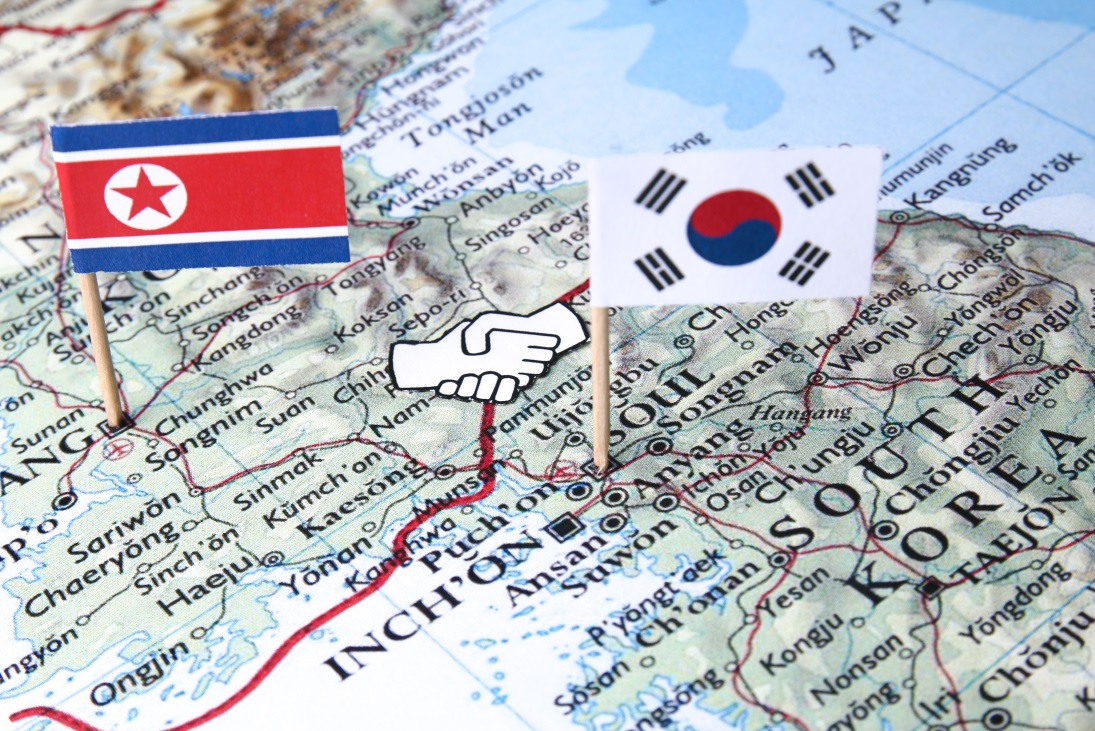
National Music
Special Report | July 29, 2021
Ihn-gyo Bae
Academic research professor at the Korea Performance Art Research Institute of Gyeongin National University of Education
North Korea refers to their music as Juche ("self-reliance") music, utilizing it as a critical tool for propagating their regime and mobilizing the public. This issue examines the origin and formation of Juche music through the analysis of Dr. Ihn-gyo Bae, who takes a conceptual and historical approach to Korean music.
During the Three Kingdoms Period of ancient Korea (57 BC-668 AD), the three countries used eum (音) or ak (樂) as terms referring to music. However, music of the Korean peninsula was termed Hyangak (鄕樂, provincial music), while Chinese music, which was considered more advanced then, was termed Dangak (唐樂, music of Tang dynasty). Hyangak means rustic and unsophisticated music. Alongside Hyangak, Sokak (俗樂, vulgar music) was also used during the Goryeo Dynasty (918-1392). As opposed to a-ak (雅樂, elegant music), imported from the Song Dynasty of China, Sokak meant shabby and vulgar music. Both Hyangak and Sokak were terms that were used in contrast to Chinese music, and even until today, national music communities use such terms uncritically. In the late 19th and early 20th centuries, Yangak (洋樂, Western music) which was acknowledged as further advanced than Chinese music, was implanted in the Korean peninsula, raising the need for a new modern term for Korean music.
Concept and History of Music on the Korean Peninsula
After Imperial Japan seized the national sovereignty of Korea (1897-1910), Ham Hwa-jin (1884-1948), an a-ak musician at Yiwangjikaakbu (李王職雅樂部, Royal Music Institute of Yi Household), published Joseonakgaeyo (朝鮮樂槪要, Introduction to Korean music) in order to write about music played in Jangakwon (掌樂院) to the Imperial Household Agency of Japan. Ham Hwa-jin used the term Joseon-ak, which, unlike Hyangak or Sokak, does not include the concept of valuation such as self-depreciation or sense of inferiority, and reflected “Joseon’s music,” not Japan’s music. However, the term Joseon-ak (music of Joseon) was confined merely to music the upper class enjoyed during the Joseon Dynasty period (392-1910).
The term Joseon-eumak (Joseon’s music) emerged, as “eumak”, the Japanese translation of “music,” was imported to Joseon during the Japanese colonial period. Ahn Hwak (1886-1946(?)), who was an independent activist and scholar, introduced this term to encompass both court music for the upper class and Minyo (Korean folk song), which differed from Ham Hwa-jin’s Joseon-ak.
Degenerated into the Japanese colony, Joseon and its people came across the principle of national self-determination. Then, while the nation underwent the February 8th Declaration of Independence and the March 1st Independence Movement, the concept Joseon-Minjok (national people of Joseon) became prevalent, reflecting people’s yearn to escape from Japan’s oppression. However, the term minjok is the Japanese translation for the German word “volk” and French word “nation,” and is used to refer to terms such as folk, nation and ethnic. In this context, Kwan Kim, a music critic introduce d the term Minjok-eumak (national music). This term, which was the combination of minjok and music, was used to refer to the music of the people of Joseon, which is different from that of Japan. Minjok here was used to refer to “ethnic,” as well as the Japanese translation of “volk.”
The terms Joseon-ak, Joseon-eumak, and Minjok-eumak were frequently used during the Japanese colonial period. After liberation in 1945, Gugak (國樂, Korean national music) and Gojeon-eumak (classical music) were used in addition to these terms. Gugak is a term accommodating both music for the liberated new nation and Joseon-eumak, which many common people enjoyed in the hierarchical society, but not the music of YiwangjikAakbu. The term Gugak was first used in Gugakwon (national music institute) which was established under the leadership of Minsokak (folk music) musicians.
Immediately after liberation, the Gugak Committee of the Music Construction Headquarters, an affiliate of the Central Council for the Cultural Construction of Joseon Culture, was inaugurated. It changed its name to the Gugak Construction Headquarters, which then was renamed as Gugakwon in October 1945. Musicians of GuwanggungAakbu (Ancient Royal Court Music Institute, YiwangjikAakbu of the Japanese Colonial period) were highly unpleased and felt challenged by Minsok musicians preoccupying the term “Gugak,” but could not find a way to reterieve it. However, as some of the musicians of Gugakwon, a center built under the leadership of the Minsokak circle, were apprehended for being justifyists and others defected to North Korea, YiwangjikAakbu requested that the national assembly following the establishment of the Korean government, open the National Gugak Center in order to reclaim Gugak, which Minsokak circle had preoccupied. Eventually, the National Gugak Center was built under YiwangjikAakbu’s initiative. Then, the Training Center for Performers of Korean Traditional Music, the predecessor of National Gugak Middle and High school, opened. Here, Gugak, which had been previously used to refer to the current Korean music, was used to refer to “old music.” As a result, the term Gugak was used interchangeably with traditional music, or old music. Besides, as Gugak referred to old music, the term “New Gugak” was coined, defined as the music of the new nation and new era. This, however, was not generally used. While Hyangak and Sokak, used until the 19th century with an inferior connotation, entailed ‘contemporariness’, terms used after the 20th century such as Joseon-ak, minjok music, Gugak, and traditional music all referred to old music that was played in the past. On the other hand, Yangak referred to as music of the modern and new era. Meanwhile, after “Joseon music” became Gugak, “classical music” became a term only used among the Western music community, which indicated Western classical music that emerged in Europe.
After the division of the Korean Peninsula, the North Korean music community mainly focused on modernizing music, while inheriting the old music (heritage) from the Joseon Dynasty in order to establish music for the people of the new [North] Joseon (Democratic People’s Republic of Korea),. In this sense, it referred to old Joseon music as Gojeon-Ak (classical music). However, the status of Gojeon-Ak, which was represented by Pansori (Korean traditional musical storytelling) and Changgeuk (唱劇, Korean traditional opera), was degraded amidst the emergence of controversies regarding their ethnic and populist identity. Meanwhile, with Gojeon-Ak gradually incorporated into the minjok music of the Japanese colonial period, the Research Institute of Gojeon-Ak was renamed as the National Ethnic Arts Theater.
Joseon Music and Juche Music of North Korea
The concept of Minjok music, used in North Korea, is related to the music of the past. During the liberation period (1945-1950) of Korea, this term referred to “new music.” In “new music” elements of Western music and old Korean music are integrated. However, though minjok music meant “new music of the new era,” this term accommodated the concept of old music, and two of its original definitions were separated into two terms, “modern music” and “Joseon music” after discussions in the 1950s regarding the heritage of minjok music. Definitions of modern music, which refers to the musical traditions of both old music and Western music were incorporated into the term Joseon music. Joseon music was therefore used to refer to old music, modern music, and future-oriented music. Joseon Music was adopted as the name of the official magazine of the Central Committee of Joseon Musicians Alliance, proving the use of this term.
As Juche ideology solidified in the late 1960s, Juche music emerged upon the basis of Minjok music, or Joseon music, and was used as a term representing North Korean music.■
■ Ihn-gyo Bae is academic research professor at the Korea Performance Art Research Institute of Gyeongin National University of Education. She received her Ph.D from the Academy of Korean Studies of the Graduate School of Korean Studies in 2008. Her research interests include inter-Korean communication and convergence of cultural arts, children songs of North Korea, and the historical development of North Korea’s minjok music. She published Stories of Different yet similar arts of North Korea (2020), Party Policy Slogans and Middle School Minjok Music Education in the Kim Jong Un Era (2020), National Instrument Improvement and National Orchestral Music Instrumentation Carried out in North Korea in the 1950-60s (2019), etc.
■ Typeset by Kwang-min Pyo Senior Researcher
For inquiries: 02 2277 1683 (ext. 203) | ppiokm@eai.or.kr
Art of North Korea / Conceptual History

60 Years of the North Korea-China Treaty of Friendship and its Implications in the Present
Sang-sook Lee | July 28, 2021

The Reality and Challenges of North Korea-China Relations Near the 100th Anniversary of the Chinese Communist Party and the 60th Anniversary of the Treaty of Friendship
Dong Ryul Lee | July 23, 2021

Anticipating the Reunion of Moon and Kim
Seong-Ho Sheen | July 06, 2021
LIST